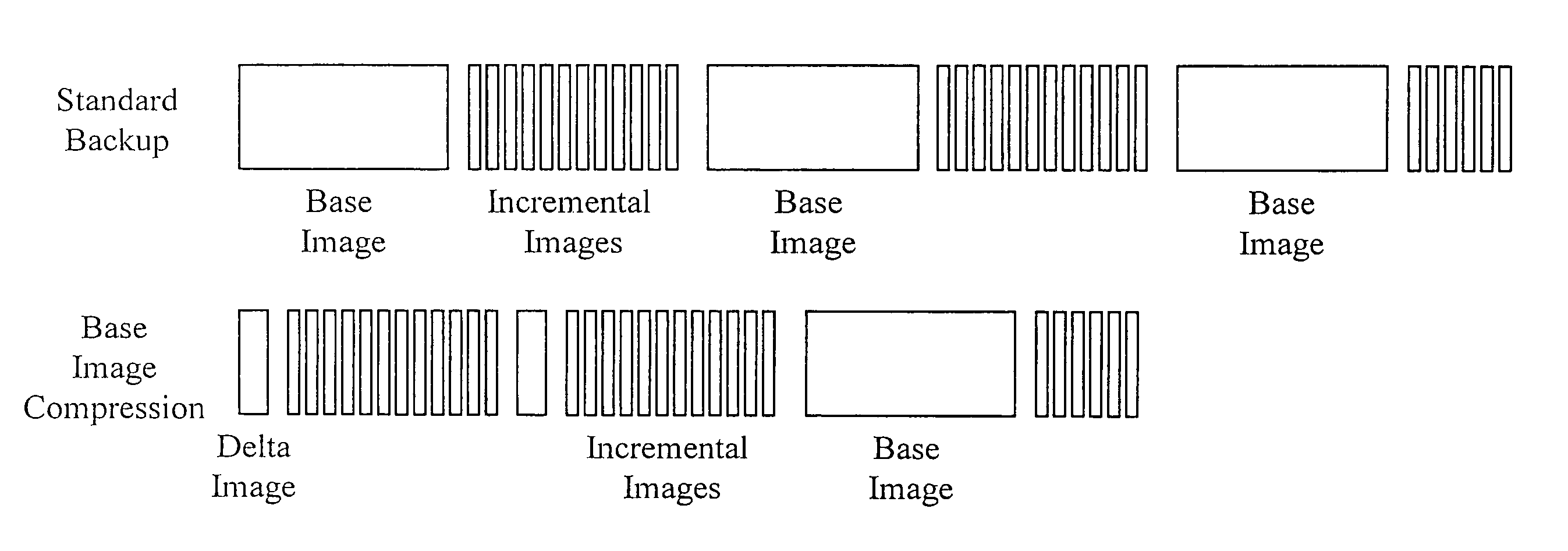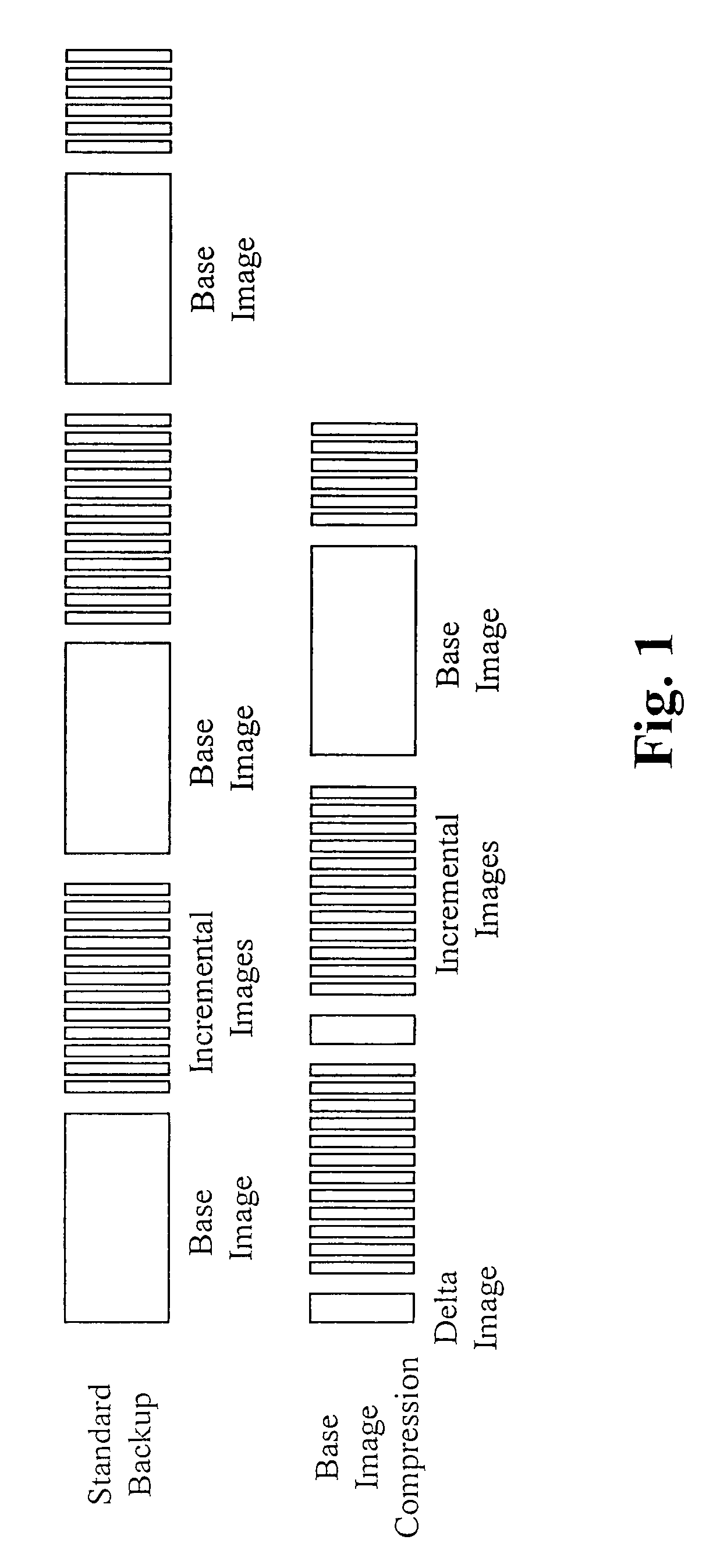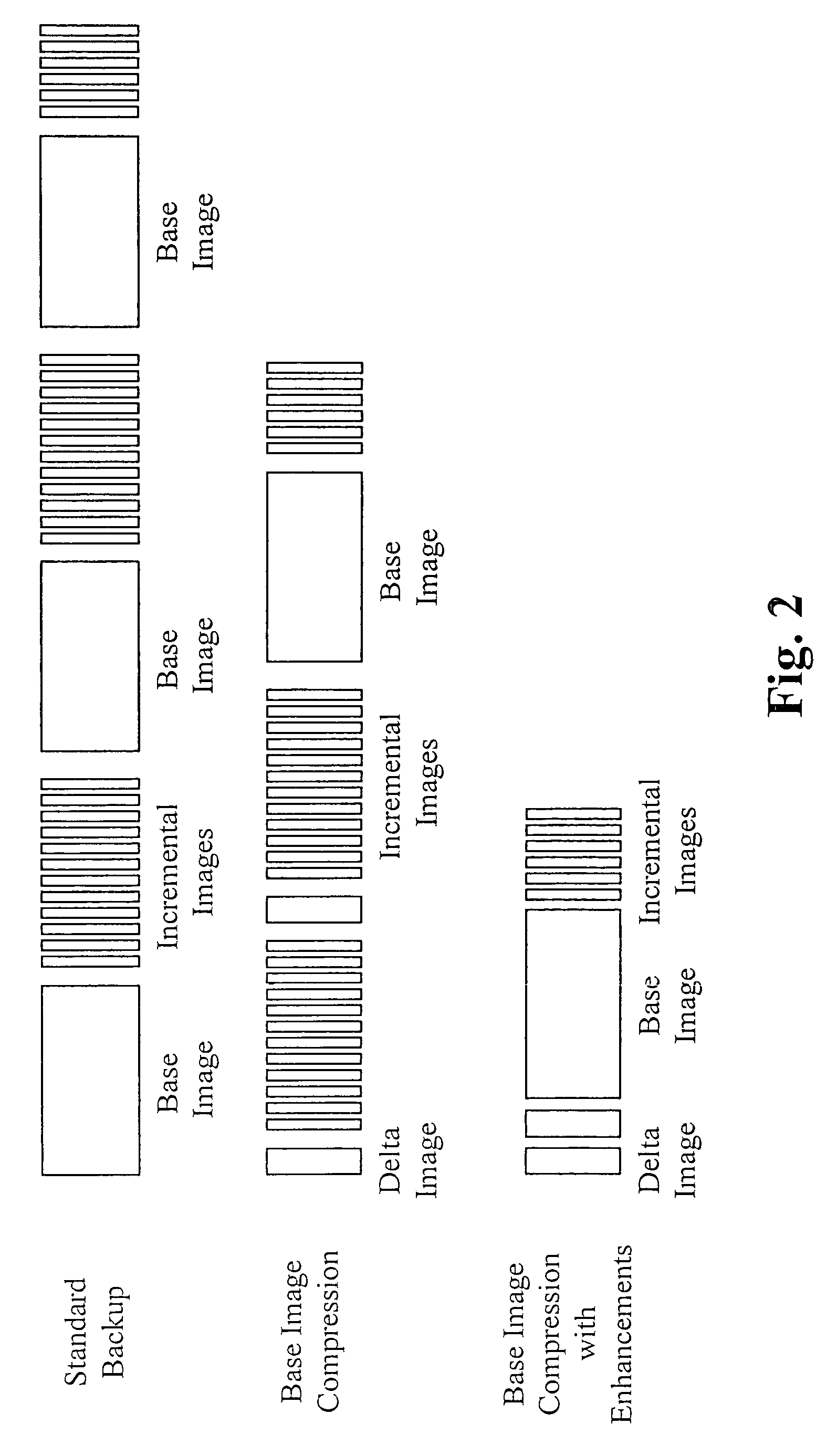Method of and system for enhanced data storage
a data storage and enhanced technology, applied in the computer field, can solve the problems of granular and the least convenient use, the difficulty of organizing the storage space and managing the backup process, and the complexity of the backup process, so as to achieve enhanced data storage, enhanced data storage, enhanced data storage
- Summary
- Abstract
- Description
- Claims
- Application Information
AI Technical Summary
Benefits of technology
Problems solved by technology
Method used
Image
Examples
Embodiment Construction
[0041]A method of and system for enhanced data storage is described herein. A storage appliance has several functions, one of which includes storage of server and / or personal computer backup images. The backup function requires extensive amounts of storage since it is preferable to store multiple backups. The enhanced data storage is a storage methodology including compression techniques, enhancements to data purge routines and use of removable drives as extended temporary storage. These improvements greatly enlarge the storage capabilities of a storage appliance. For example, a storage appliance utilizing a standard backup methodology is capable of storing 200 to 300 GB of data based on a 50% compression ratio. However, utilizing the enhanced data storage, the backup storage capacity is able to be increased 2 to 3 times that of the standard methodology, thus potentially allowing nearly 1 TB of data to be stored.
[0042]The storage appliance stores image backups on RAID storage drives...
PUM
 Login to View More
Login to View More Abstract
Description
Claims
Application Information
 Login to View More
Login to View More - R&D
- Intellectual Property
- Life Sciences
- Materials
- Tech Scout
- Unparalleled Data Quality
- Higher Quality Content
- 60% Fewer Hallucinations
Browse by: Latest US Patents, China's latest patents, Technical Efficacy Thesaurus, Application Domain, Technology Topic, Popular Technical Reports.
© 2025 PatSnap. All rights reserved.Legal|Privacy policy|Modern Slavery Act Transparency Statement|Sitemap|About US| Contact US: help@patsnap.com



